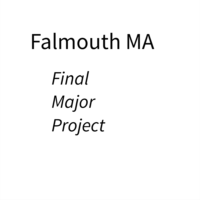Questions:
- What images do you remember?
- Why was that?
- Where did you see them?
- Are we desensitised to images of conflict today?
- What imagery provokes change for you? Why?
The Raising of the flag on Iwo Jima is a famous photograph but for it is an idealised image, I first saw the image when studying ‘O’ Level History at a school but it was not until much later that I discovered the back story behind the image. For me there are more compelling images that better reflect the battle to capture the island such as this image.
The following article providing more detail http://www.iwojima.com/battle/battlec.htm that links to the image.
There significant world events such as 9/11 that have an immediate impact and therefore everyone can remember what they were doing on that specific date. For me I do not remember seeing the images of people jumping from the world trade centres twin towers. Instead I remember the impact of the plane exploding when it hit the building captured as captured by this images
I was in a Global Business Continuity Workshop on that day with colleagues from different parts of our company, we had offices in New York but luckily in midtown not in the downtown district so the events only had an indirect impact on our company that day. We watched the events unfold via a television in the conference room and it was a salutary reminder that the disaster we planned for do happen and they impact real people. Those images changed the trajectory of our work for the 8 years.
The Vietnam war is said to have been the most photographed war and this is maybe why the images swayed public opinion in America that ultimately resulted in the war ending. Yet photography from the Korean War did not have the same impact. There are similar harrowing images of children looking to escape war.
This quote from Levi Strauss alludes to why the same reaction did not occur. ‘The photographer operates as a distanced, superior, ‘objective’ witness to war, poverty, labour an exotic cultural practices in other parts of the world. Photographs taken from this position may elicit pity, sorrow or guilt in their viewers but they will never provide information for change'(Levi Strauss 2003, p.45)
This leads me to reach the conclusion that images alone are not enough to generate change as expressed by Stallabrass ‘The intention is that they are there for people to critically reflect on the representation of war, the wars themselves, and prehaps particularly the role of the media and the art world in dealing with those images. That is all one can do. We can put them out there’ (Strallabras, 2013, p.3) Though if those images are not shared then public opinion has not ammunition to use to fuel the dialogue that ultimately will be the agent of change. However with digital photography citizen photographers are able to share those images immediately yet that speed of distribution may well be causing it’s own problems the stream of images from the war is places like Syria is constant however they collectively do not reach a critical mass at any point of time to drive the debate in the way photography from the Vietnam was did in 1970’s America.
–UA_Flight_175_hits_WTC_south_tower_9-11.jpeg
Levi Strauss, David (2203) Between the Eyes: Essays on Photography& Politics, New York: Aperture
Stallabrass, Julian (2013) Memory of Fire: Images of War and the War on Images London: Photoworks






